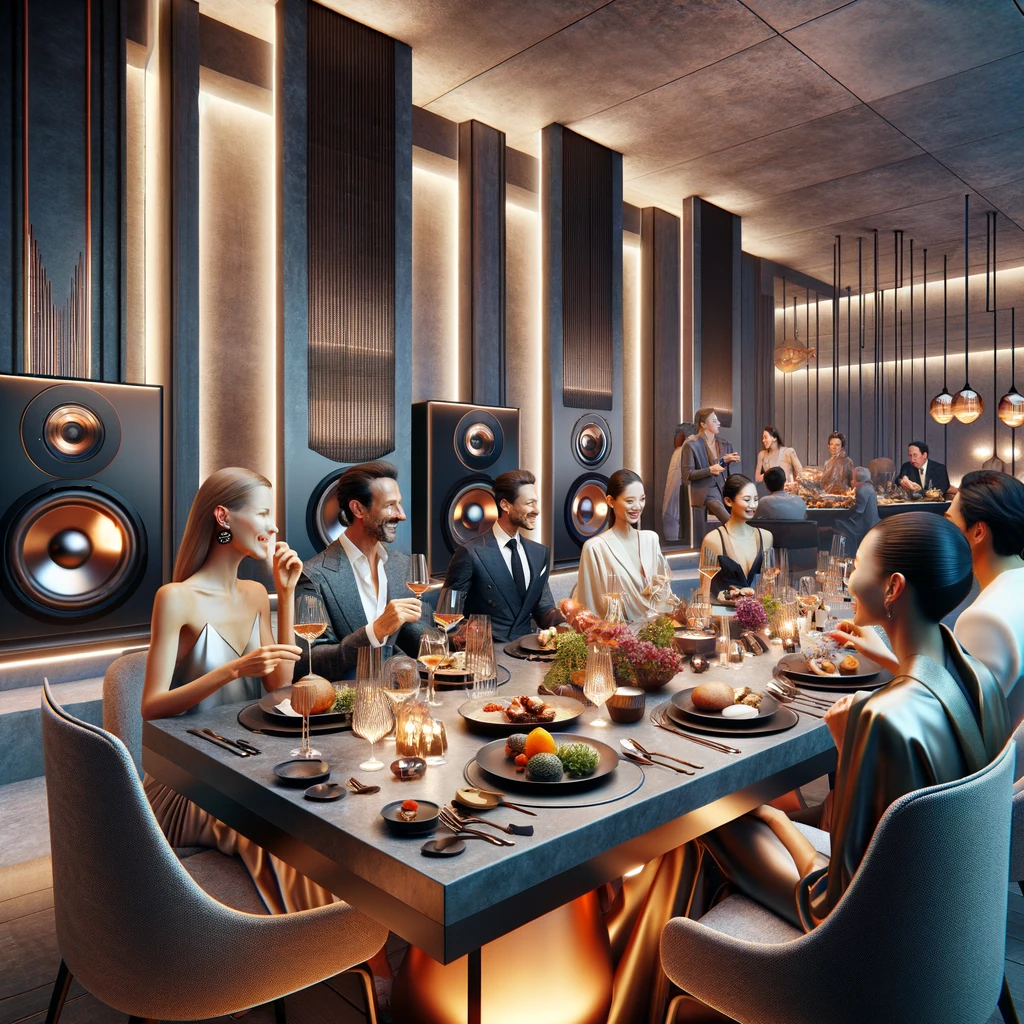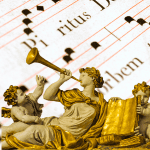When we think about the pleasures of dining, our minds often conjure up images of delectable dishes and tantalizing aromas. However, there is another element that plays a significant role in our culinary experiences: music. Music has the power to enhance our perception of flavors, elevate the ambiance of a restaurant, and create a truly immersive dining experience. In this article, we will explore the fascinating correlation between music and food, the impact of sound frequencies on our palette of flavors, and the exciting opportunities for composers to create bespoke music for dining experiences.
The Science Behind Music and Taste
To understand the profound connection between music and taste, we must first delve into the science behind it. Our perception of taste is not solely determined by the flavors of the food we consume. It is a multisensory experience that involves the integration of information from multiple senses, including taste, smell, sight, and even touch. Sound, as it turns out, is a vital component of this sensory symphony.
Recent research has shown that specific sound frequencies can influence our perception of flavors. Higher-pitched sounds, such as tinkling piano keys, have been found to enhance the perception of sweetness. On the other hand, lower-pitched sounds, like deep bass notes, can emphasize bitterness. The tempo and rhythm of music also play a role in our dining experience. Fast-tempo music may encourage faster eating, while slow, soothing melodies can promote a more relaxed and enjoyable meal.
Elevating the Dining Experience with Bespoke Music
Given the scientific evidence supporting the correlation between music and taste, visionary chefs and restaurateurs are embracing the possibilities of using bespoke music to enhance their patrons’ dining experiences. By collaborating with composers and sound designers, restaurants can create custom-tailored soundscapes that elevate the culinary journey in various ways.
1. Flavor Enhancement
Restaurants can work with composers to create soundtracks that complement the flavors of their dishes. Imagine dining at a seafood restaurant where the sounds of gentle waves and seagulls transport you to the ocean, accentuating the freshness of the seafood menu. The harmonious interplay between the music and the flavors creates a truly immersive and unforgettable dining experience.
2. Ambiance and Theme
Customized music can help establish a restaurant’s unique ambiance and theme. A rustic Italian eatery, for example, could incorporate traditional Italian music, evoking the warmth and charm of the Italian countryside. The carefully curated soundscape sets the stage for a culinary journey that transports diners to the heart of Italy.
3. Timing and Pace
Bespoke music can be curated to align with the progression of a multi-course meal. Soft, melodic tunes between courses allow diners to savor each dish, while lively melodies can accompany more casual dining experiences. The music acts as a guide, enhancing the rhythm and flow of the meal and ensuring a harmonious dining experience.
4. Emotional Connection
Music has a profound impact on our emotions, and restaurants can harness this power by selecting music that resonates with their target audience. Whether it’s a nostalgic melody that evokes childhood memories or a contemporary track that energizes and uplifts, the right music creates an emotional connection that enhances the overall dining experience and encourages repeat visits.
Practical Considerations for Implementing Bespoke Music
While the integration of bespoke music in a restaurant can elevate the dining experience, there are practical considerations to keep in mind:
- Licensing: To avoid legal issues, it is essential to ensure that the music used is properly licensed. Working with composers and sound designers who understand copyright laws can help navigate this process.
- Volume Control: The volume of the music should be carefully adjusted to complement the dining experience without overpowering conversation. Striking the right balance allows diners to enjoy both the music and their interactions with fellow diners.
- Customer Feedback: Regularly seeking feedback from diners is crucial for fine-tuning the music selection. Understanding their preferences and adjusting the music accordingly ensures a more personalized and enjoyable dining experience.
The Cultural Connection: Music and Taste Around the World
The correlation between music and taste is not limited to a specific culture or cuisine. It is a universal phenomenon that transcends borders and has been observed across different societies. Various cultures intentionally pair specific sounds with certain foods to enhance the overall experience.
In Japan, for example, the slurping sound made while eating ramen is considered a sign of appreciation and enjoyment. This cultural practice adds an auditory component to the taste experience, making it more immersive and satisfying. In Western cultures, the sound of sizzling bacon or the crackling of a freshly baked loaf of bread evokes feelings of anticipation and pleasure, heightening the enjoyment of the food.
By exploring the connection between music and taste in different cultures, we gain a deeper understanding of how our auditory senses shape our culinary experiences and develop a greater appreciation for the diversity of gastronomic traditions around the world.
Case Studies: The Impact of Sound Frequencies on Taste
To illustrate the profound influence of sound frequencies on our perception of taste, let’s delve into some intriguing case studies. In one study, participants were given identical chocolates while listening to different soundtracks. The researchers found that the participants rated the chocolate as sweeter when they were exposed to high-frequency sounds compared to low-frequency sounds.
In another study, participants were given a variety of flavored drinks while listening to different types of music. The researchers discovered that the taste perception of the drinks was significantly influenced by the music. For example, participants rated a lemon-flavored drink as more sour when they listened to music with high-pitched tones and sweeter when they listened to music with low-pitched tones.
These case studies highlight the powerful influence of sound frequencies on our perception of taste. By manipulating the soundscape, we can alter the way we perceive flavors, opening up a world of possibilities for enhancing our culinary experiences.
The Future of Music and Food: Innovation and Advancements
As our understanding of the correlation between music and taste continues to evolve, exciting advancements in the field are on the horizon. Researchers are exploring the use of sound therapy to enhance the perception of taste for individuals with taste disorders or age-related taste loss. By utilizing specific sound frequencies, it may be possible to restore or enhance the enjoyment of food for these individuals.
Technological innovations, such as sonic utensils or plates that produce specific sounds when in contact with food, could revolutionize the way we experience taste. These innovations have the potential to create unique and personalized culinary experiences, unlocking new dimensions of flavor and texture.
Conclusion: A Symphony for the Senses
In conclusion, the correlation between music and food is a captivating field of study that offers a new perspective on our culinary experiences. The integration of bespoke music in restaurants allows for the creation of multisensory dining experiences that amplify the flavors, elevate the ambiance, and forge emotional connections with diners. Whether you are a chef, a food enthusiast, or simply someone who appreciates the power of music, incorporating sound into your dining experiences can enhance the enjoyment and appreciation of food. So, the next time you sit down for a meal, savor not only the flavors on your palate but also the harmonious symphony of music that surrounds you, and let it transport you to a world of culinary delights.







0 Comments